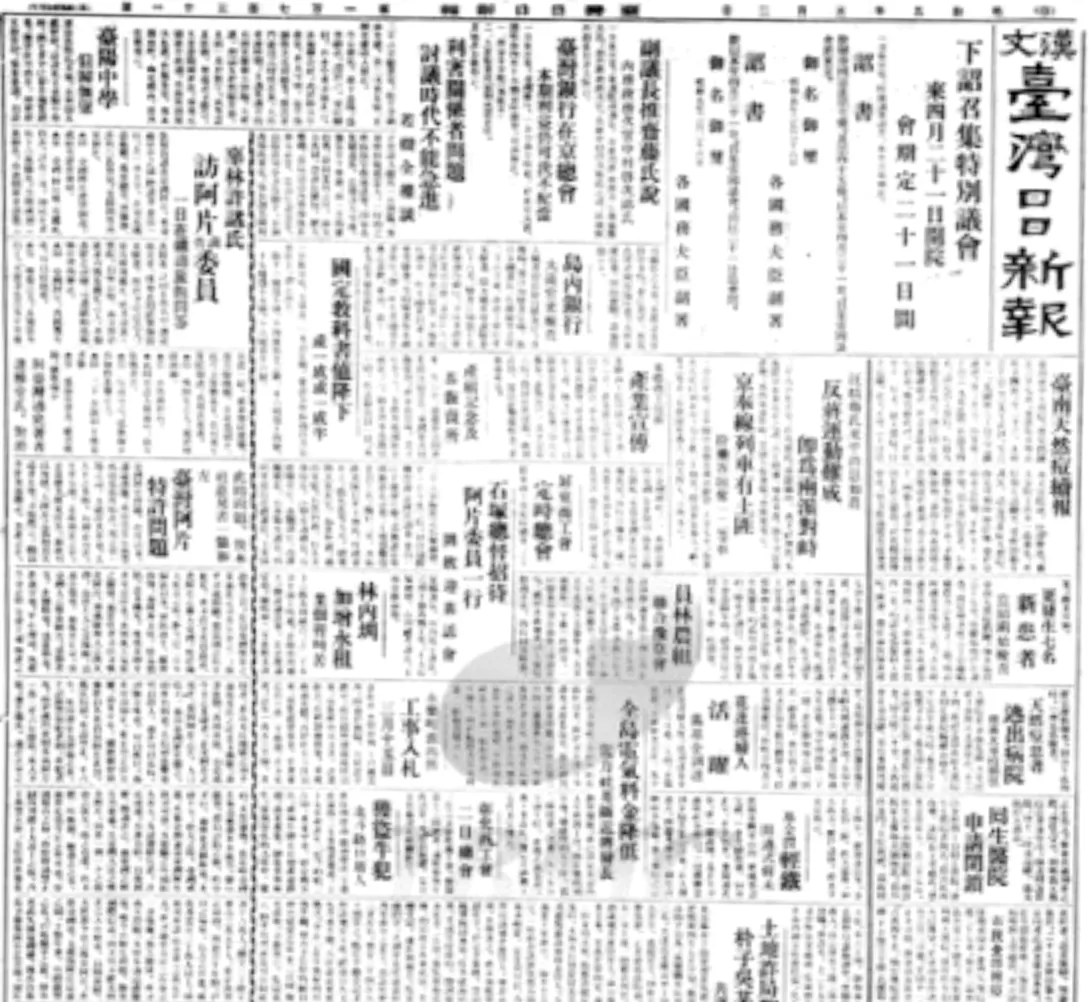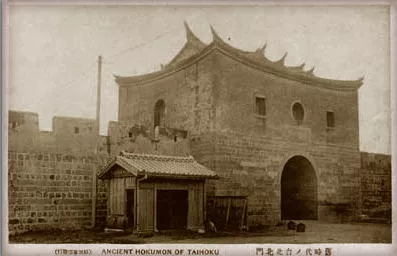The Scent of Memory: Exploring Taiwan’s Camphor and Opium History in Taipei
Discover the hidden stories of the largest camphor and opium factory in East Asia and the complicated relationships between Hans, Japanese, indigenous people on this island.
National Taiwan Museum has several fascinating branches, including the main building at 228 Peace Memorial Park, Natural History Branch, which was the largest bank in Japanese Colonial time, the Railway Ministry Park, and the Nanmen Park.
Each venue reflects Taiwan’s diverse historical footprints. And the Nanmen Park, which is now surrounded by many government offices, unveiled the hidden histories of the so-called “Two Golds”— camphor the white gold, and opium the black gold — during the colonial period.

---------------------
A Factory Steeped in History
During the Japanese colonial period, the Nanmen Park was East Asia’s largest camphor and opium processing plant. Its roots actually can be traced back to the Qing Dynasty when northern Taiwan was covered by uncountable thousands-of-year-old camphor forests.
Han settlers from Mainland China came all the way to this island for survival. They, of course, would not miss out this precious opportunity to make profit. So they ventured deep into these forests to harvest camphor, which often had small conflicts with the indigenous in the process.
Why Was Camphor So Important?
Before I visited this park, I did not realize how useful camphor was because it’s only used as repellents. Before petrol was found, camphor had a wide range of uses, from medicine and smokeless gunpowder to celluloid film and toys, making it a coveted resource.
Nevertheless, camphor trees grow only in warm and humid climates, such as broadleaf forests in Southeast Asia and parts of Australia, leaving Western countries dependent on imports. Additionally, the older the trees are, the more camphor they produced. So growing camphor trees in a greenhouse wasn’t feasible for the demands.



I didn’t know they were all made of camphor before I visited this museum.
In 1858, French army defeated China and forced it to trade with the western countries. After that, foreign merchants from the U.S., Russia, Germany, and Britain rushed to purchase camphor, tea, and other goods in Taiwan.
During the Japanese colonial era (1895–1945), the government modernized the process by establishing a factory, which was like TSMC Science Park at that moment, at Nanmen. Then, Taiwan was able to supply half of the world’s camphor, earning it the moniker “The Kingdom of Camphor!”
Yet, both Qing and Japanese authorities faced fierce resistance from the indigenous tribes, whose lands were coveted for camphor extraction. Conflicts such as the Dakekan Wars, Wushe Incident, and Pillow Mountain Battle, bear testament to this violent history.
These “pacification” campaigns often resulted in the displacement or extermination of Indigenous communities, allowing the governments to claim the lands as state property.
For those who are interested to learn more about WHY they had conflicts and HOW both parties found a way to cooperate… yes Japanese rulers was scared of them and also tried not to start another wars, please read this article: “War in the camphor zone: Indigenous resistance to colonial capitalism in upland Taiwan, 1895–1915".

A photo of the indigenous people which was taken in 1906. They had never feel lower than Japanese and were so confident.
Thankfully, a replacement was invented: petroleum. Since it’s cheaper, camphor became less and less important, and the science park was eventually shut down in 1967. But many thousands-of-year-old camphor trees were gone forever.
----------------------
The Opium Connection
In addition to camphor, the factory produced another product with a controversial history: opium, which was actually banned during the colonial time.
Why would the government both ban and produce opium?
To be more specifically, the government banned opium with the so-called “gradual prohibition.” The policy aimed to alleviate severe withdrawal symptoms of opium.
However, since the benchmark to purchase opium is too low, it in practice allowed Taiwanese people to purchase it legally without a problem. In 1921, the standards were even loosened further, enabling more users to legally consume opium.
This contradiction sparked backlash from the intellectuals, who then published critiques in newspapers and even brought the matter to League of Nations in Geneva.

Opium Smoking Permit, which could apply easily without any requirements.

A piece of newspaper about the critiques of the Opium Policy.
But, how did the colonized people send reports to international organizations oversea?
It is said that the report, or the telegraph to be more specifically, was prepared by Chiang Wei-shui (a prominent Taiwanese activist). To avoid interception, Chiang’s 17-year-old son, who looked innocent, delivered the message late at night after the English-speaking telegraph operator had left. Surprisingly, the message still went through.
When I was reading the story, I found it interesting because it’s a small but real example of workplace laxity across eras.
Ultimately, the League of Nations dispatched officials to Taiwan to investigate. However, much like modern-day United Nations condemnations to Putin, Japan, the colonial power, had the option to either deny the claims or disregard them entirely.
For a more stories about the opium history on this island, I suggest to read this article: “The Taste of Opium: Science, Monopoly, and the Japanese Colonization in Taiwan, 1895–1945”
-------------------------
Architectural Highlights of the Nanmen Park
Originally spanning over 36,000 square meters, the factory complex has shrunk to less than an eighth of its original size. Declared a national historic site in 1998, the remaining structures include Camphor Warehouse (hereafter called the Red House), Goods Storehouse (hereafter called the White Hall), the 400-dan capacity pool and a small section of red brick wall.
The Red House: This two-story brick-and-concrete structure features the “Tatsuno style,” characterized by horizontal white bands across its red brick exterior.

What is Tatsuno Style?
Like what happened in China, Japan was also forced to trade with the Westerners back in the mid-19th century. Determined to catch up with the West, Japan sent students abroad and invited foreign experts, including Josiah Conder, an English architect often called the “Father of Modern Japanese Architecture.”
Conder mentored many influential Japanese architects, including Tatsuno Kingo, who later learnt from Norman Shaw’s style in London, such as the Alliance Assurance Building, which was famous for its horizontal white bands across its red brick exterior.

Alliance Assurance Building
Although Tatsuno Kingo himself never set foot in Taiwan, his students brought his style to the island, and designed many well-known works, such as The Presidential Office Building.

The Packing Hub: Adjacent to the Red House, this iron-roofed structure once served as a hub for loading and unloading goods. The curved lines on the ground reveal the tracks once used for transporting goods between buildings.


The White Hall: A rare Meiji-era stone building, designed by Ichiro Nomura, Tatsuno Kingo’s student, constructed with the stones repurposed from Taipei Defensive Walls. It earned its nickname due to its white exterior.

what are The Taipei Defensive Walls?
The walls surrounded the city’s administrative center, which was established after Taipei was designated the capital of Taiwan Province in 1884 during the Qing Dynasty.
However, since Europeans started redesigning their cities with roundabouts like the center of Paris, Japanese rulers soon tore the defensive walls down and repurposed the useful stones on their own buildings.
Also, Taipei citizens opened the gates for the Japanese army when they invaded Taiwan, so the 11-year-old walls never ever showed its power in reality.


The 400-dan capacity pool: Built as a fire reservoir, this pool also provided water for cleaning and irrigation. Dan is a measurement in the Japanese unit. The water came from waste generated during factory processes. During restoration, the fountain system was designed to resemble fire hydrants, emphasizing its original function.

In addition, the park once had a shrine called the Kusunoki Shrine, dedicated to camphor deities and prominent Shinto figures. Though dismantled during the post-war period, a model of the shrine is displayed the ground floor of the Red House.
The name “Kusunoki / Camphor” is a wordplay combining “kusuri / medicine" and “ki / tree", referencing camphor trees for its medicinal vital.

--------------------------
A Living Museum for All
Today, the Nanmen Park offers a blend of historical and modern attractions. The Red House hosts a permanent and temporary exhibitions with volunteering tour guides; The Packing Hub is now running by a fancy restaurant; The White Hall serves as a multipurpose space. The museum also hosts outdoor markets and events, such as the annual Malaysia Cultural Day, making it a family-friendly destination.

These buildings, steeped in history, are more than silent witnesses to Taiwan’s past — they are a reminder of the complex legacies that linger, much like the lingering scent of camphor and poppies in Taiwan’s collective memory.
----------------
References:
- Official Website of the National Taiwan Museum
- The Taroko Massacre of Major Oyama Juro 117 Years Ago
- Opium Protests in the 1930s
- Invisible Margins of Colonial Rule: A Reader on Taiwan’s Peripheral History During Japanese Rule
- The Formulation of Taiwan Opium Regulations in 1897
- Alliance Assurance Building by Norman Shaw | Layers of London
- Oral introductions by Professor Dan Zhao-rong

回應文章建議規則: